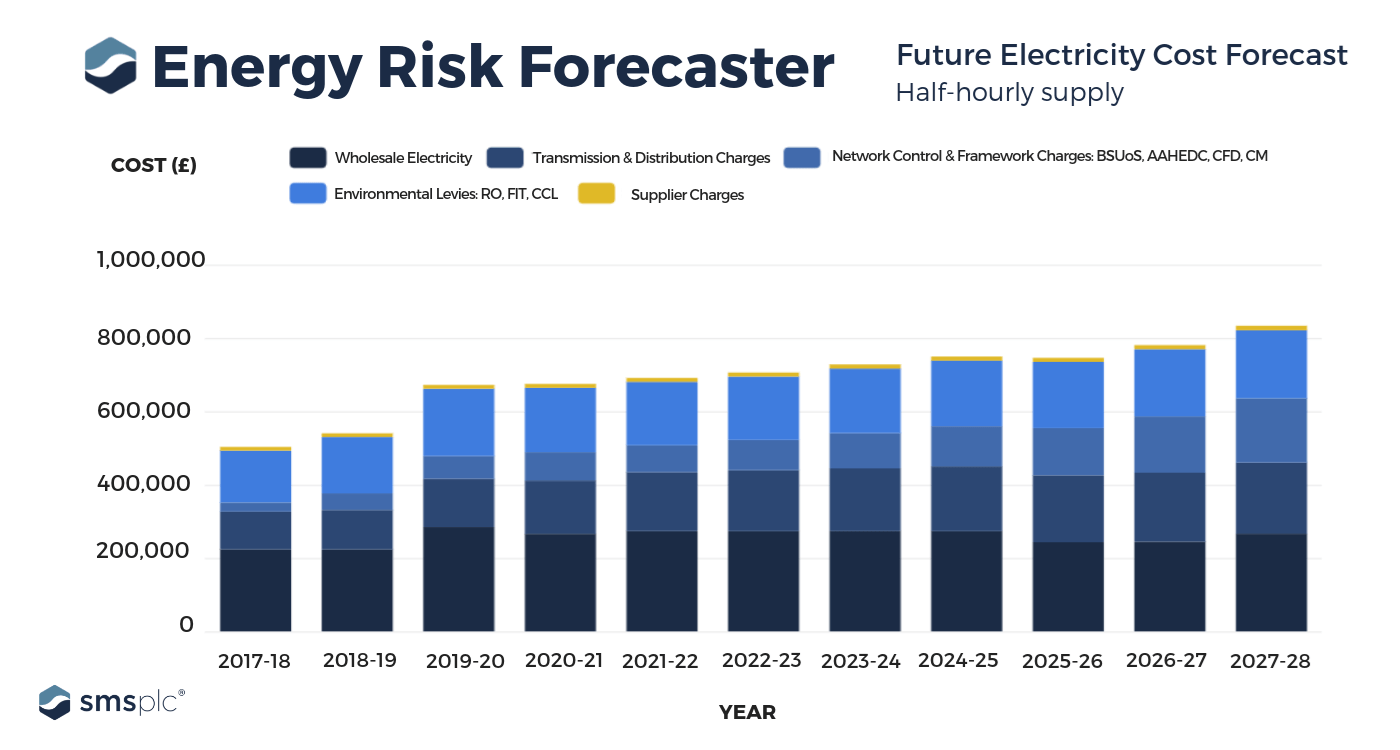The grave risks of not acting on your energy efficiency recommendations

With a low number of organisations to have implemented energy saving measures following ESOS Phase 1, businesses could be putting themselves – and the UK’s climate targets – at serious risk. For energy efficiency uptake to improve, we argue that carbon reduction must be treated as a financial responsibility as much as it is an environmental concern.
In the first blog of this series, we discussed some of the shortfalls of the Energy Savings Opportunities Scheme (ESOS). We looked at how it inadvertently created a race-to-the-bottom for lowest-cost (and lower quality) auditing services during Phase 1, and as a result, led to an underwhelming number of organisations adopting energy efficiency improvements.
Our intention of highlighting this is not to discourage businesses from engaging with ESOS – quite the opposite.
We argue that in the context of our climate crisis, the UK’s 2050 decarbonisation target, and the current inadequate regulations in place to achieve it, that both the energy efficiency industry and British businesses have a growing responsibility to step up and plug the policy gap.
In order to plug the gap, it means we must create a culture where all businesses fully understand the benefits of practising energy efficiency, and correspondingly, the significant risks of not. Besides the government, the onus is on energy experts like us to help build awareness.
So what do we mean exactly when we say businesses have a “responsibility” to act?
Energy saving: environmental concerns vs financial concerns
Thankfully, over the past couple of years public awareness on the issue of climate change, its potential serious consequences, and the central role of energy in this dynamic, has risen dramatically. Like all major social issues, this consciousness has gradually seeped into and become more outwardly reflected by organisations. As more individuals care deeply about the environment, so do a growing number of businesses – and that can only be a good thing.
This begs the question: will a higher proportion of environmentally-aware organisations correlate with an equally high number of businesses taking steps to actively reduce their energy consumption and carbon emissions? While greater environmental awareness and CSR is certainly helping the climate cause, evidence so far suggests a far from perfect relationship on this issue (available data indicates that just five per cent of businesses took forward their energy audit recommendations in full following ESOS Phase 1).
There are understandable reasons for why this might be. Very often, the major obstacle cited by businesses for not investing in energy saving is because of resource constraints – a rational concern for any responsible company.
According to the UK Government’s ESOS Phase 1 Impact Evaluation Report, the main reason for non or late compliance was a “low priority placed on energy efficiency and ESOS”.
Here is where any sensible business concerned about its bottom line may consider a departure of thought on the matter: from energy efficiency being deemed a non-priority cost of doing business, to a place where it is viewed as a vital investment for the long-term sustainability of the company.
Here at SMS, we consider energy saving as not just an environmental responsibility, but a financial one too. That is why we have invested in it for the future health of our business, and that is why – as an energy efficiency expert – we provide consultancy, financing options, project management and any other resources required for our clients to carry out their own improvements.
But why is energy efficiency such a big financial responsibility? To fully understand it, businesses will need to recognise the current transformation that is underway in our energy system and to acknowledge how this will impact them and their future cashflows.
The rise and rise of energy costs
Energy costs in Britain have gradually been going up in recent years, and there’s no secret regarding of the major factors: the cost of decarbonisation.
To decarbonise our energy supply – to make it cleaner, more secure, and ultimately more affordable for everyone in the long run – we as consumers are having to help pay for the massive investment through our energy bills.
The government estimates that our low-carbon transition will eventually bring consumers, the energy industry and wider economy up to £40 billion of benefits over the next few decades, therefore proving a necessary growing pain towards a position where we should all be better off in the long term.
However, in the meantime it poses a serious risk to businesses who are not fully engaged and actively taking measures to protect themselves from the changes that are occurring.
For instance, obligatory charges, levies and taxes that cover the cost of running the UK’s gas and electricity networks – known as non-commodity costs – have gone from making up just 25 percent of the energy bill in 2012 to accounting for two-thirds of today’s energy invoice. Most businesses will not have failed to notice this rise in their expenses. Unfortunately, this is just the start of the story.
As Britain becomes more reliant on intermittent renewable generation over the next decade – making grid balancing a more challenging (and expensive) task – the impact of these charges is only set to grow. Verified industry forecasts estimate that business energy costs in the UK could increase a further 55 percent by 2028 compared to 2017-18 prices.
Even more alarmingly for businesses is that the lion’s share of this increase is already underway, with the cost of gas and electricity combined estimated to rise 35% percent by mid-2020 compared to last year.
To put it into some perspective: for a large business that spent approximately £500,000 on electricity in 2017-18, the same company could be spending as much as £670,000 by next year, and more than £800,000 by 2028 based on an identical rate of electricity consumption (see forecast example below).

You can calculate the impact of rising gas and electricity costs on your business using our free Energy Risk Forecaster, here.
Based on the relative immediacy and severity of this impact, there is today a legitimate and urgent emphasis for UK businesses to reduce their energy consumption in order to counterbalance the rise in costs.
So, how can we begin to do this?
The argument for energy efficiency
When it comes to reducing energy spend, energy efficiency can often provide the lowest hanging of fruit. Though energy efficiency does of course require investment, in many cases it requires only relatively small or incremental changes to make a big difference, and therefore offers a comparatively low-risk/high-reward model for businesses that are just setting out on an energy management strategy.
In this sense, ESOS continues to present a very viable and necessary vehicle for businesses who recognise their environmental and financial responsibilities, and who take the health of their organisation – and the health of the planet – very seriously.
While early adopters of effective energy management programmes stand to benefit much more than those lagging, it is not too late for those businesses currently not engaged in energy reduction to begin the process of developing a strategy. However, the warning signs are there: it will only get more difficult as energy costs continue their inevitable rise, and as policies and public opinion further evolve to favour the companies that are most sustainable.
On the policy front, there are some hints that we are now moving in this direction, with MPs having recently advised Government that energy efficiency measures should be made mandatory as part of ESOS. Since then, a consultation has been launched by Government on the existing barriers to energy efficiency uptake, and the “considerable potential” for energy efficiency to provide grid reinforcement (an estimated 40TWh of potential savings has been identified in the UK’s commercial and industrial buildings).
The significance of this potential was accentuated during August 2019, when the UK experienced its most severe electricity blackout in more than a decade. For the government, the energy system operator, and the I&C sector, the system outage served as a stark wake-up call and provided another compelling argument for why greater energy efficiency and grid flexibility will be needed as the country’s low-carbon transition develops.
Those businesses that are already well tuned in with these changes in our energy system, and their own relationship with energy, are in prime position to take advantage as new low-carbon technologies and mechanisms are opened up, offering not only a greater capacity to save but also the potential to profit from access to new flexibility markets.
While many companies have done – and are doing – a great deal already to address sustainability, there is a significant and ever-widening gap between those that are engaged and those that are not. The latter are those who are in danger of being left behind.
When looking at the energy landscape, the adage “Where there’s risk, there’s opportunity” has never rung truer. And that is why the success of ESOS – or through whichever means energy efficiency continues to be encouraged – is vitally important for our future.
n our next blog for the ‘Discussing ESOS’ series, we will outline what an effective energy management strategy looks like, from implementing opportunities identified from a high-quality ESOS audit, to achieving long-term energy savings and sustainability.
At SMS, we are committed to helping business customers improve their understanding of energy performance in their operations and to plan energy reduction programmes. Through high-grade energy audits and consultancy, we make achieving compliance with regulations such as ESOS an integral element of a wider energy management strategy.


